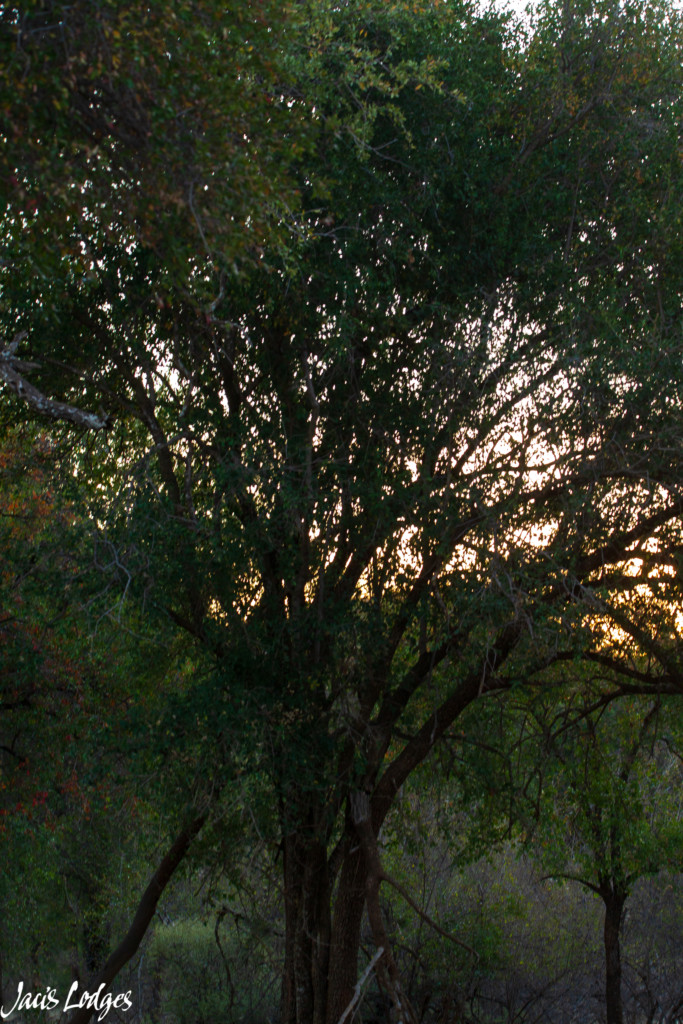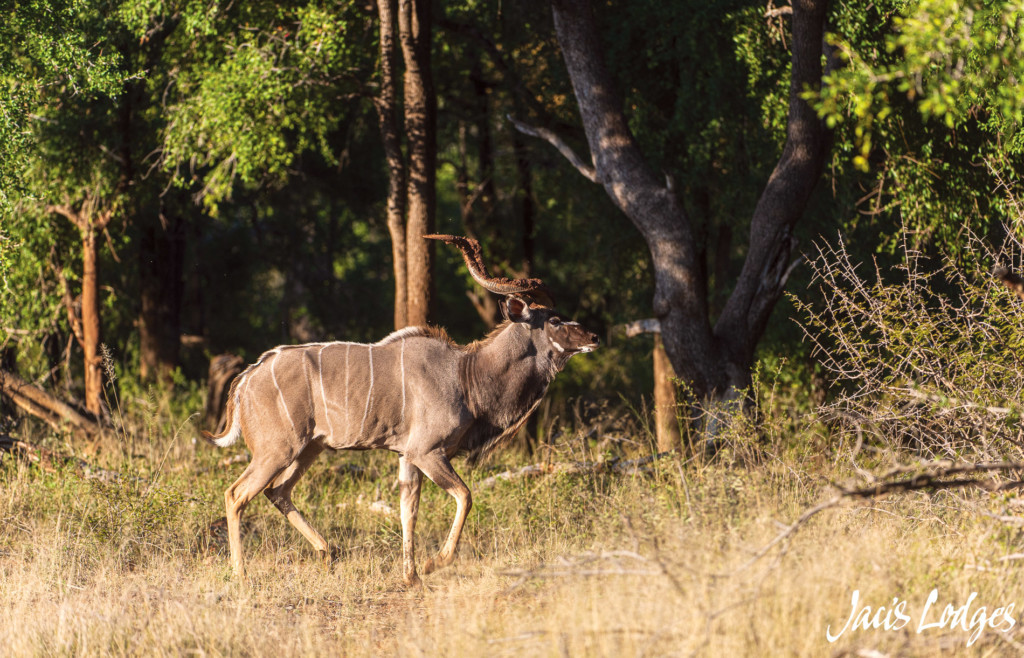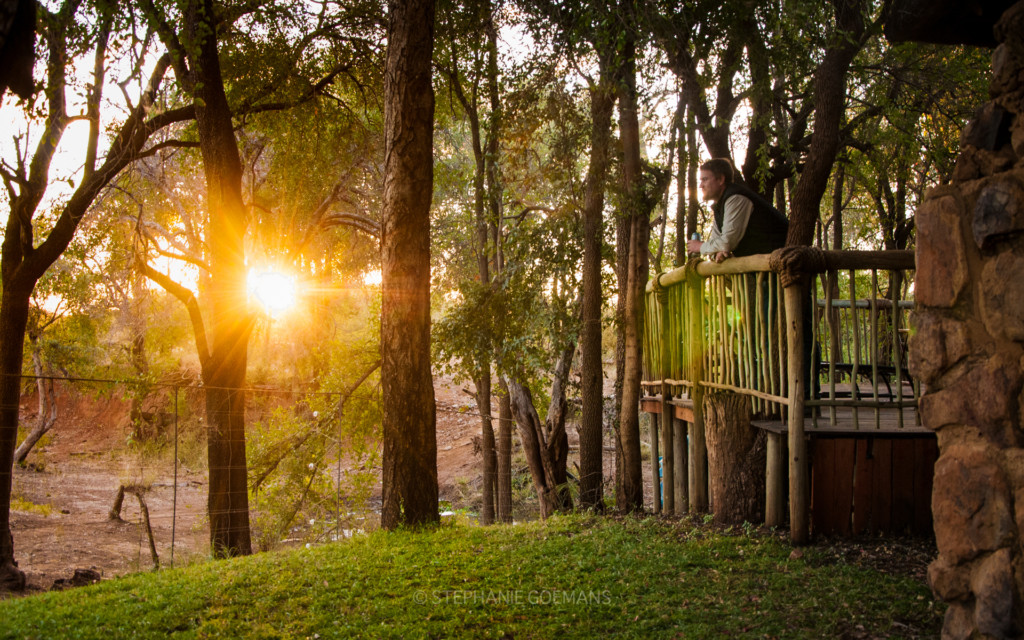One tree in Madikwe Game Reserve is known by many names – Tamboti, jumping bean tree, mothers-in-law tree and Morokuru just name a few
This is one of the most common trees we see in the reserve. The Tamboti is a hardwood, but poisonous, tree. This does not stop humans from utilizing the beautifully grained and multi-coloured wood for the manufacture of furniture. Woodturners and carpenters need to have all the safety equipment, like goggles, mask and gloves in place so as to avoid the symptoms associated with the tree, namely stomach cramps, vomiting and even hospitalization!
The Tamboti releases a milky latex fluid when you break off a piece of leave or branch. It is this latex that protects the trees from fire and creates smoke that, if inhaled, can result in death!

Image by Bianca Lambourne
Despite these terrible side effects, there are still a number of browsing animal species that can tolerate eating the leaves of the Tamboti, and it is also used quite prolifically in local culture.
Elephants, Giraffe, Kudu and even Black Rhino feed off this tree, but have evolved enzymes that would help with indigestion – the downside of eating too much of the tree it has a narcotic effect on them. When you see the droppings of the Kudu, Impala or even Giraffe, after feeding from this tree. They can sometimes have a rusty coloration to them. This rusty colour comes from the high tannin content in the leaves that is consumed by the animals.

In the African culture, the Morokuru (its Setswana name) is used for a number of different reasons. Traditionally, Motswana hunters collect the sap and boil it until it takes on a sticky glue like texture. They would then take this paste and place it on a tree where larger birds would go to perch, like the francolin, the bird will then get stuck on this branch, making their capture very easy!
Platforms or rafts are built, in river or dams, to lure fish in to smaller ponds, where it is be easier t place a fresh piece of the tamboti in the water, which removed the oxygen, resulting in the fish floating to the top. How does this work? The milky latex that is oozing from the branches, would mix with the water, this ihen gets stuck in the fishes gills, inhibiting its beathing!

If we look at the medicinal uses of the Tamboti, It is utilized to help with pain or discomfort, such as a tooth ache or would get mixed in very low dosages into food – like porridge – to help with stomach problems.
Why do we see so many Tamboti thickets in Madikwe? Interestingly, Tamboti releases a chemical into the soil that stunts the growth of other species and gives a growth boost to the surrounding Tamboti saplings – talk about nepotism!
If you were wondering why it is also called the jumping bean tree, this is derived from The African Brown Moth, that lays its eggs in the seed pods of the tree. As the seed pods mature and fall, the moth larva in the pods starts moving, making the pods look like they are jumping! The pods seem to stop moving when they get int the shade, so it is assumed that this is a very clever temperature control mechanism that the larvae have developed!
. ‘Oh, and why mother in laws tree?’ – its poisonous need we say more??
Text by Bianca Lambourne
